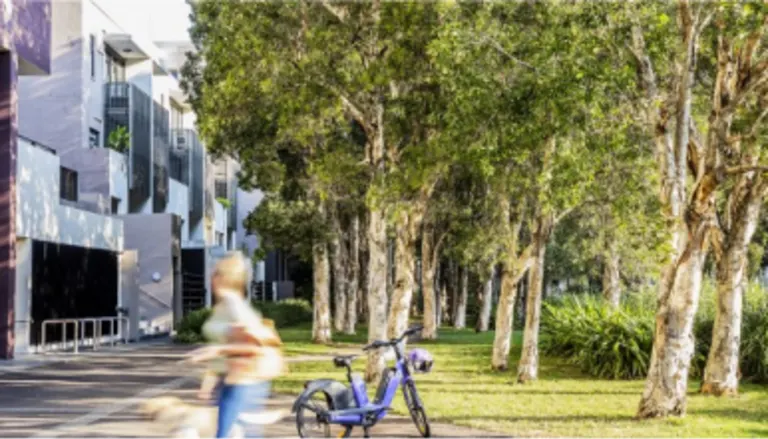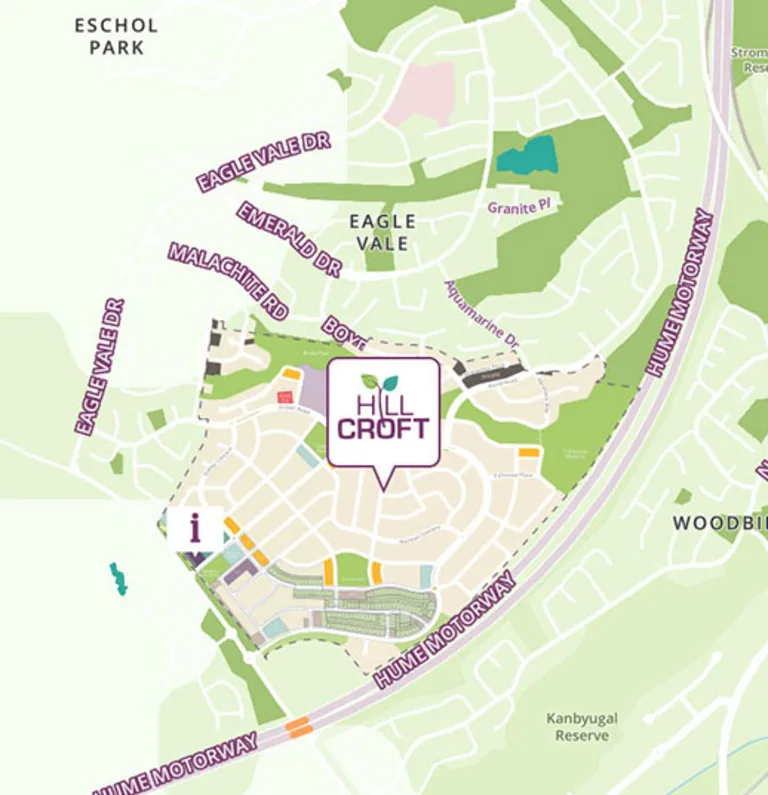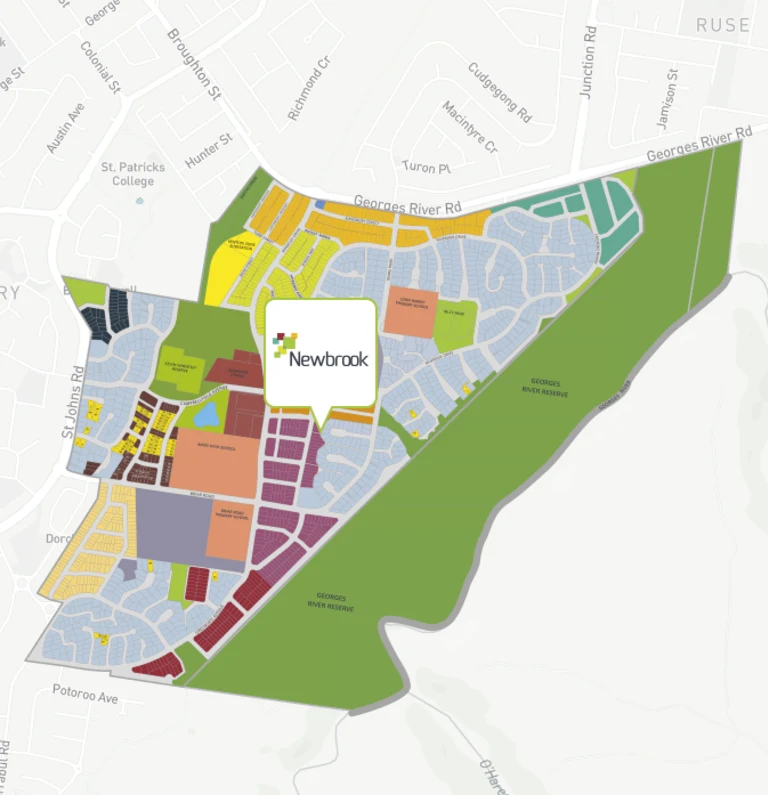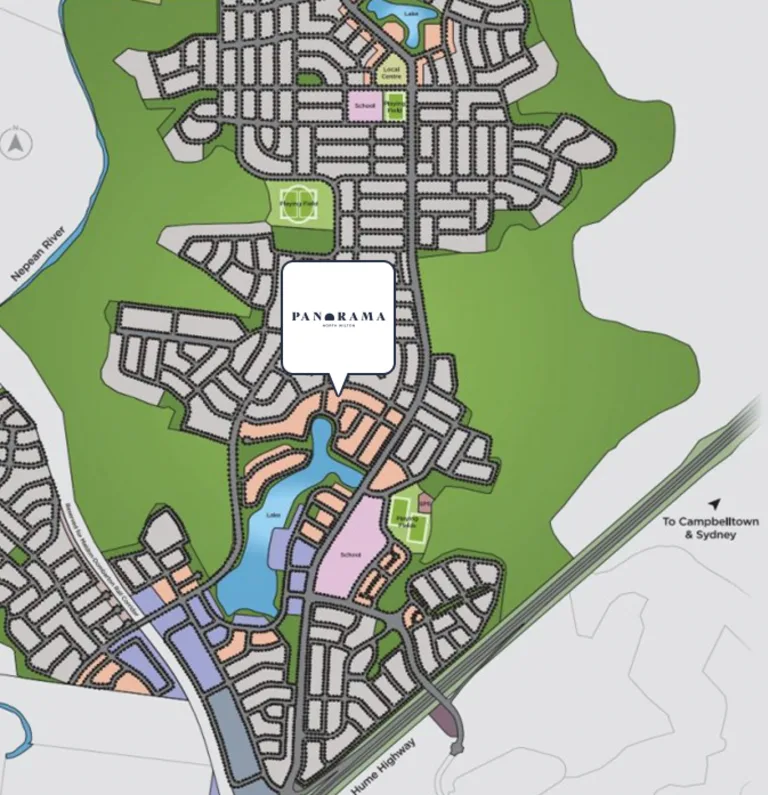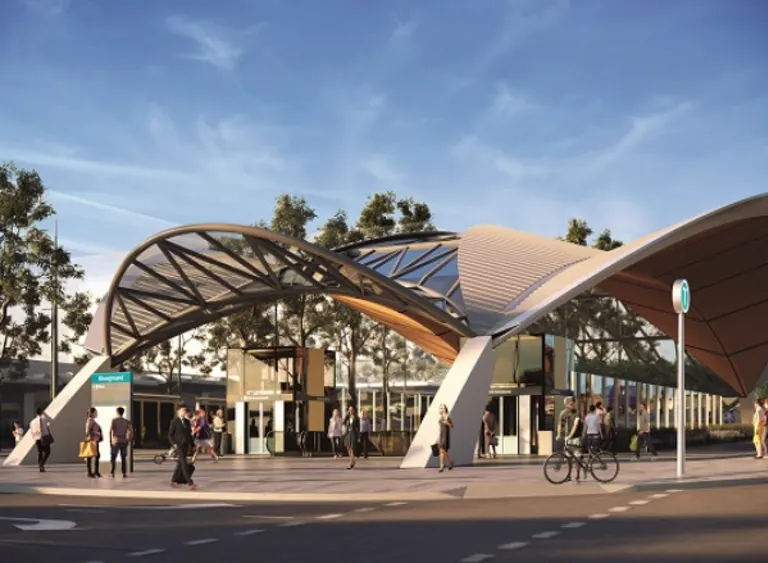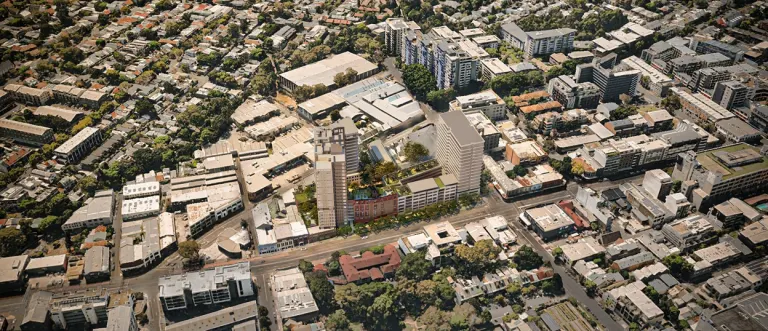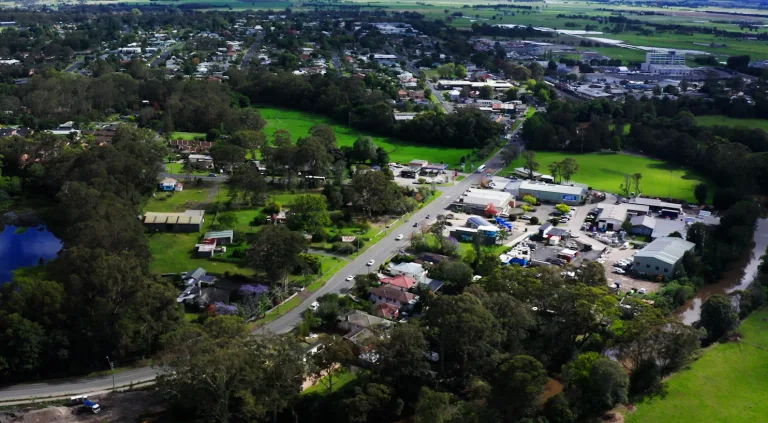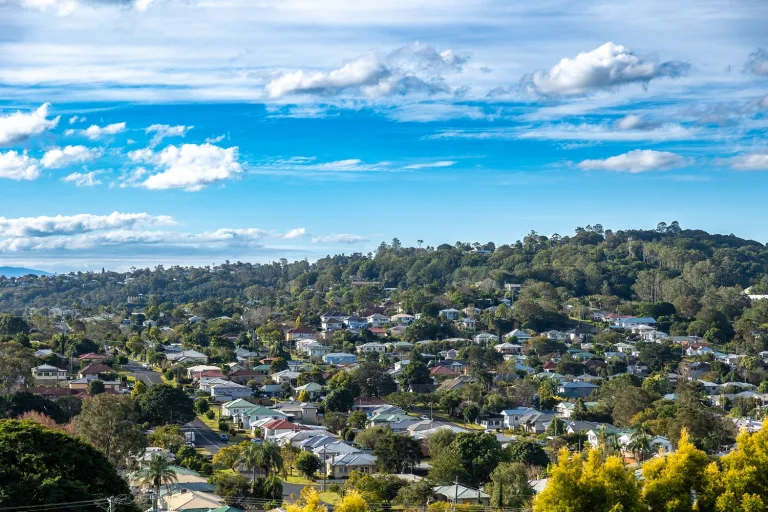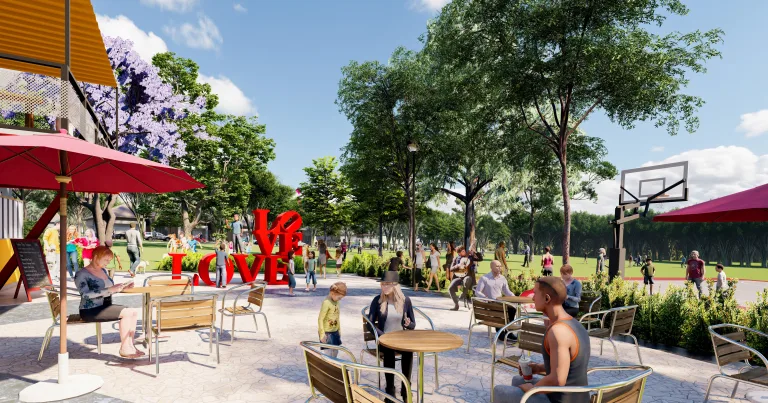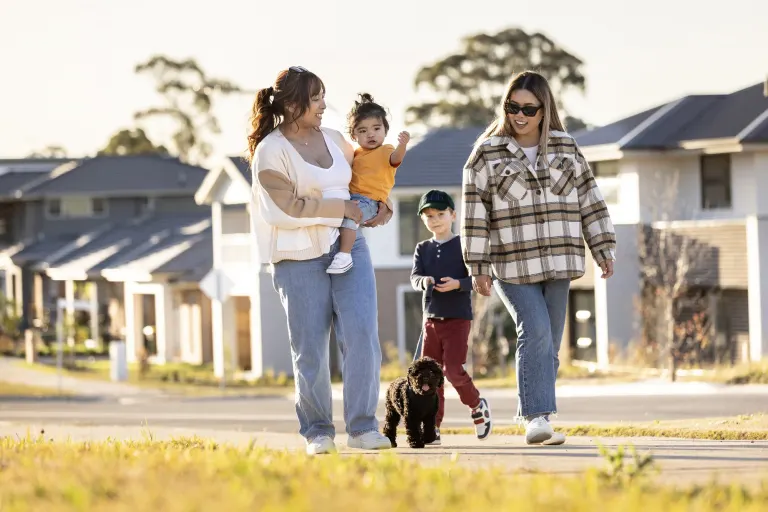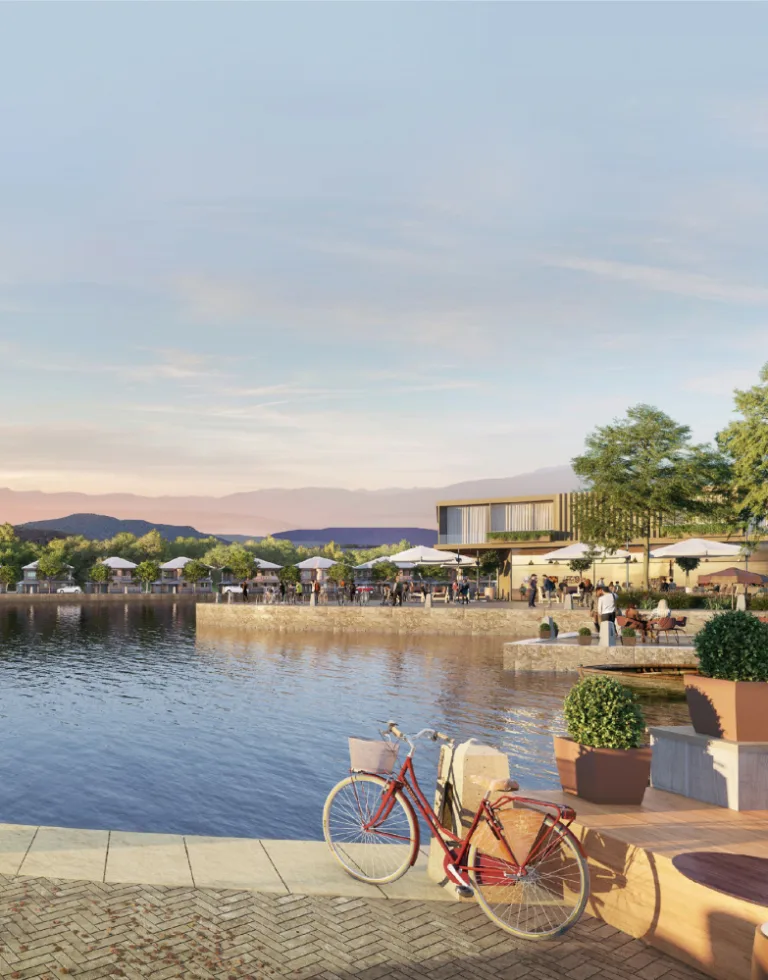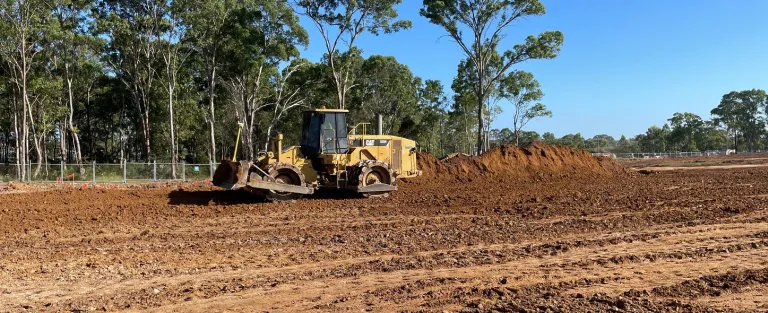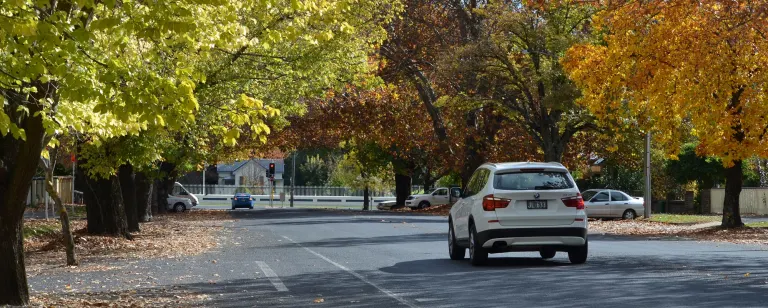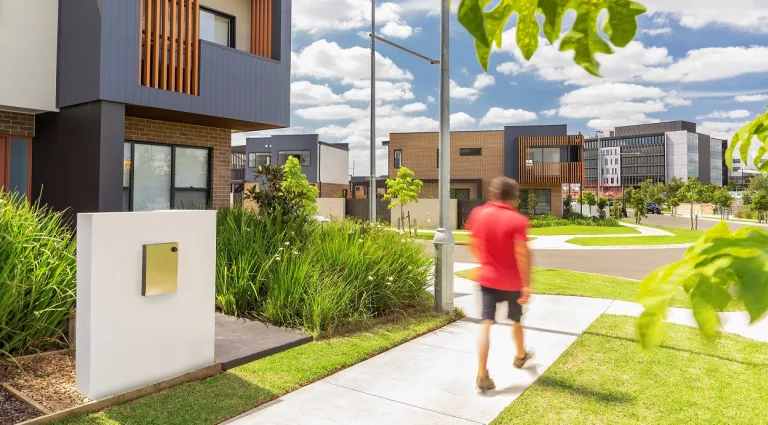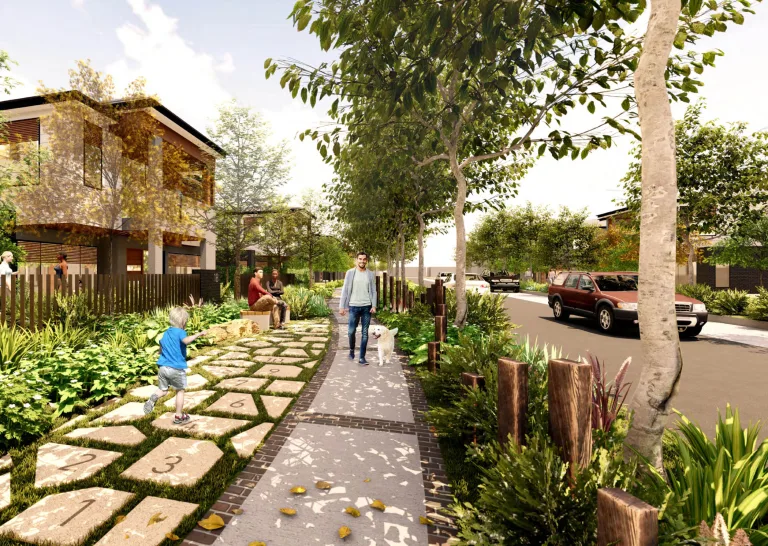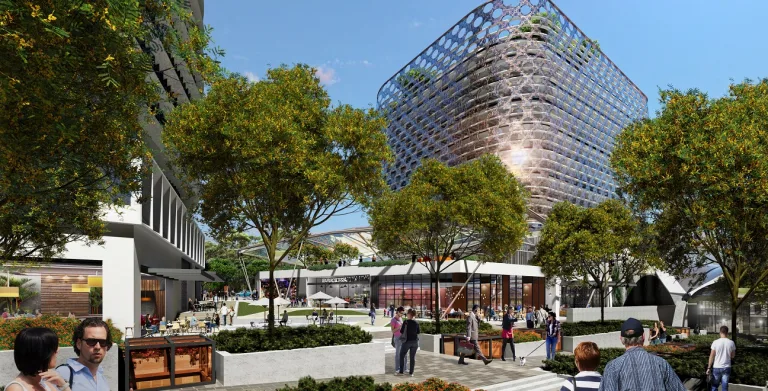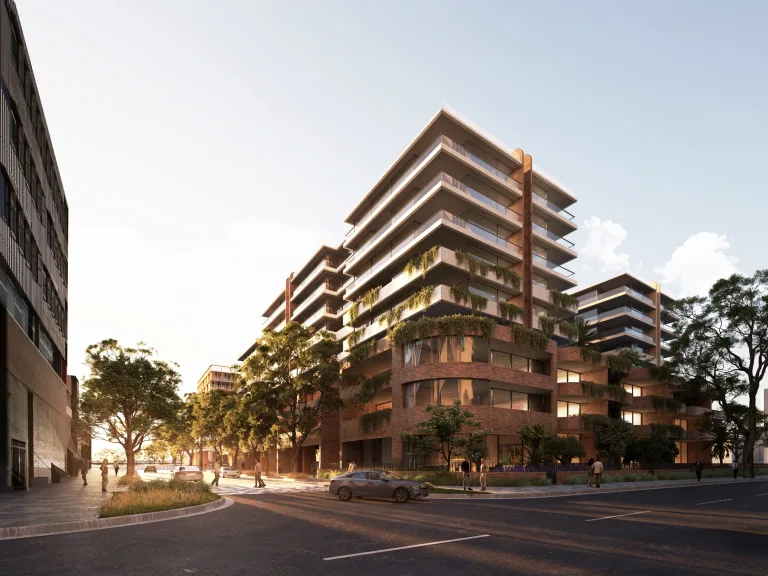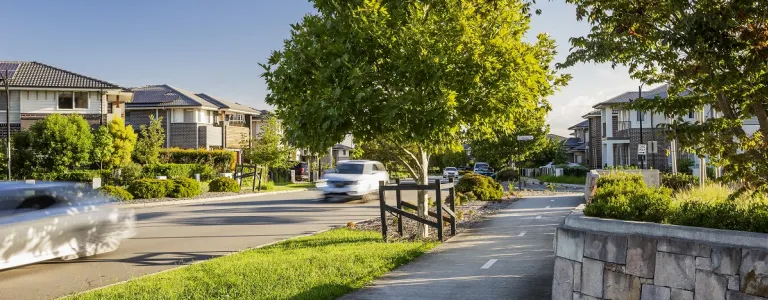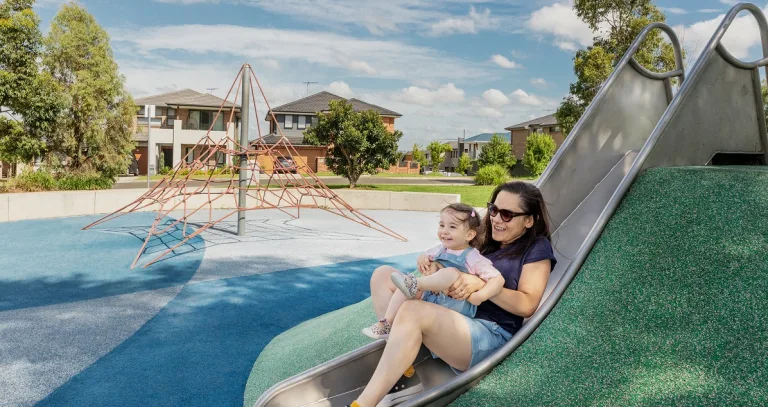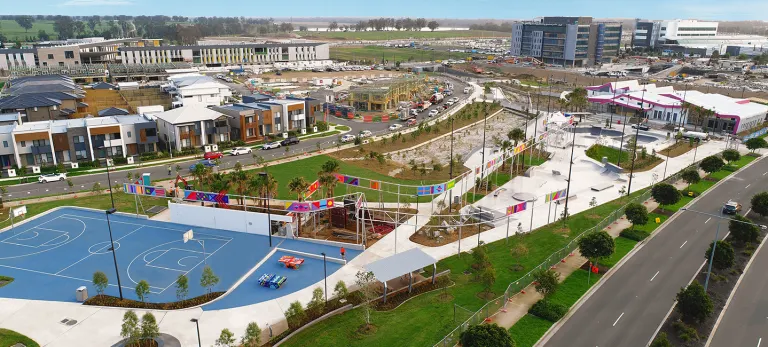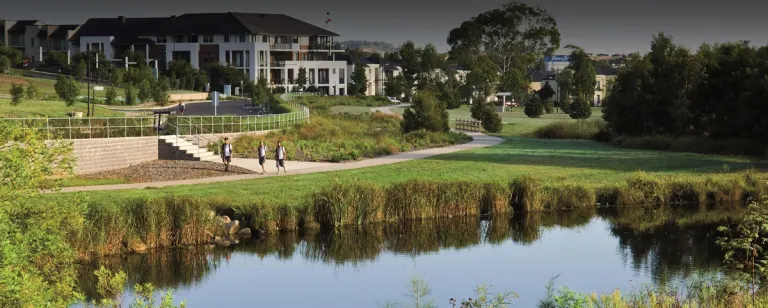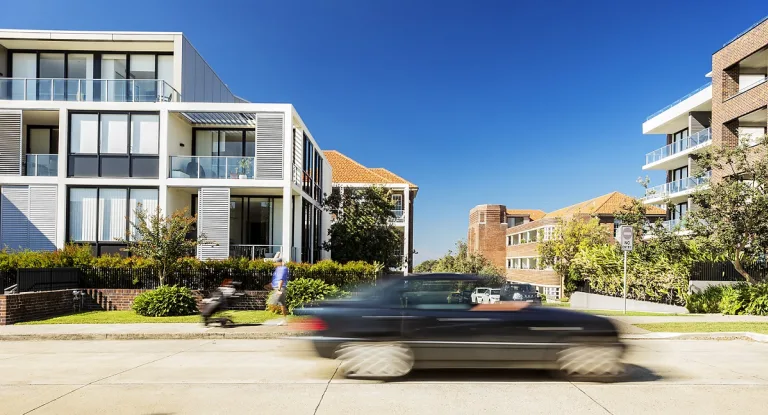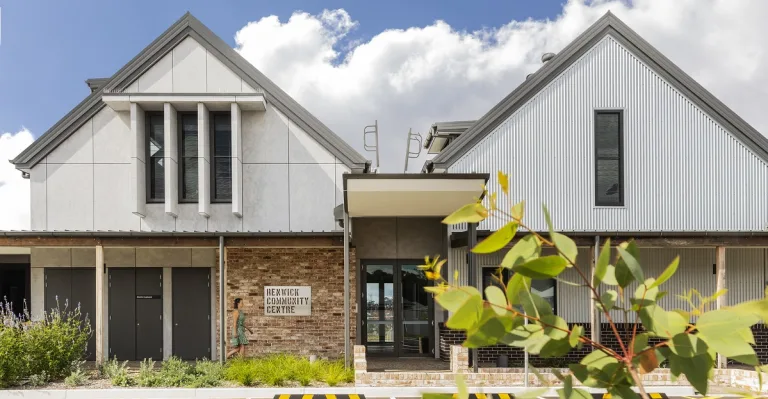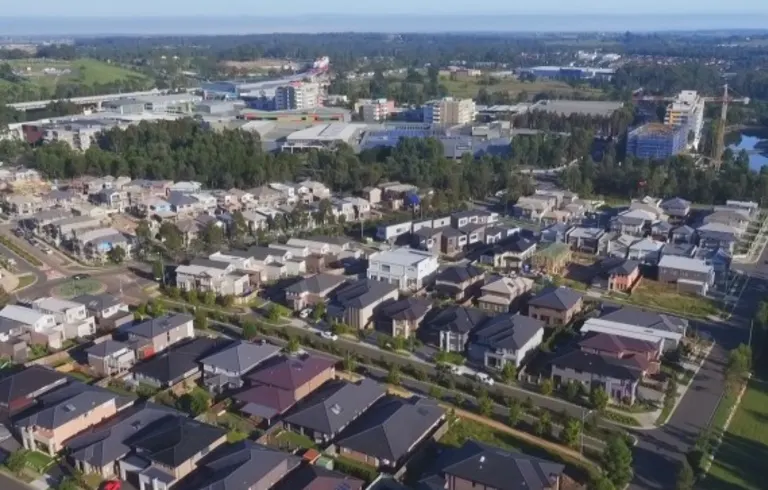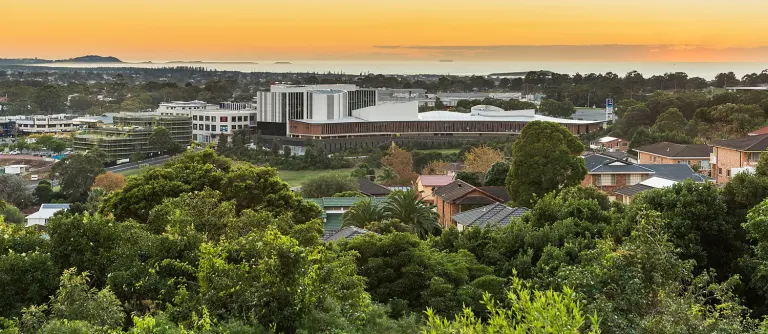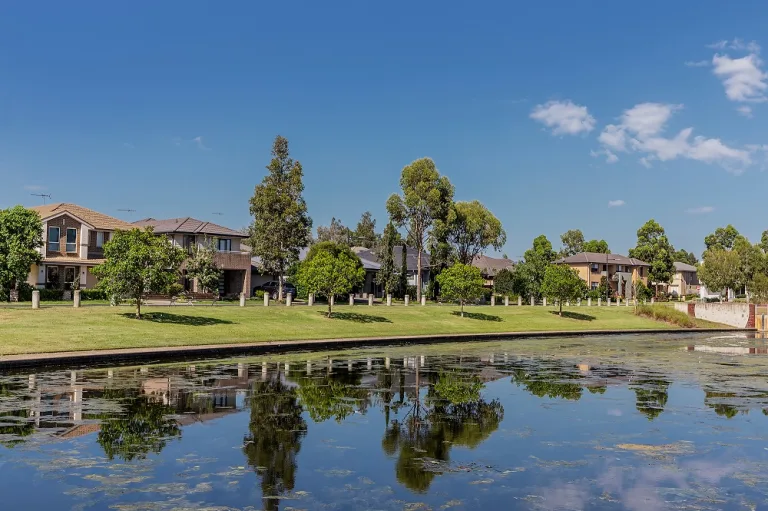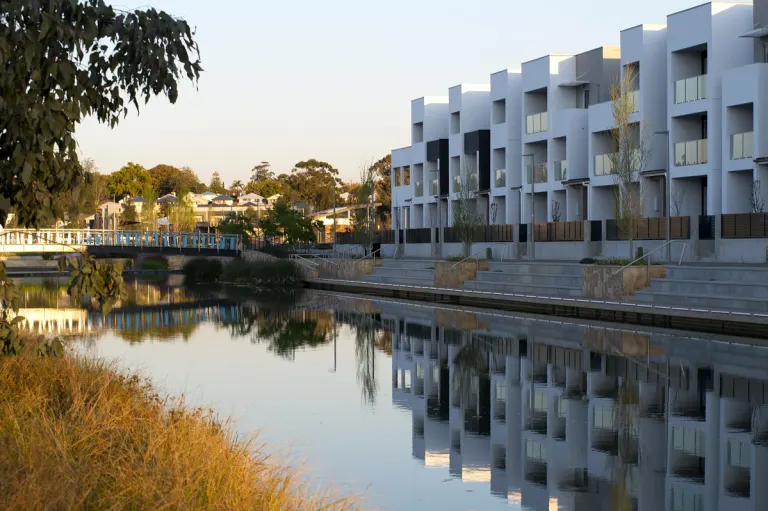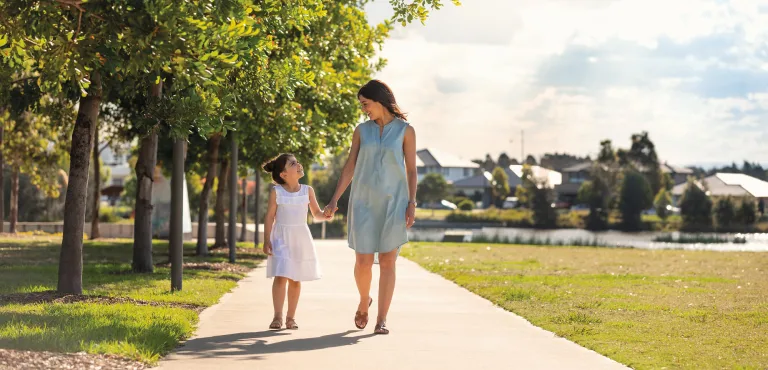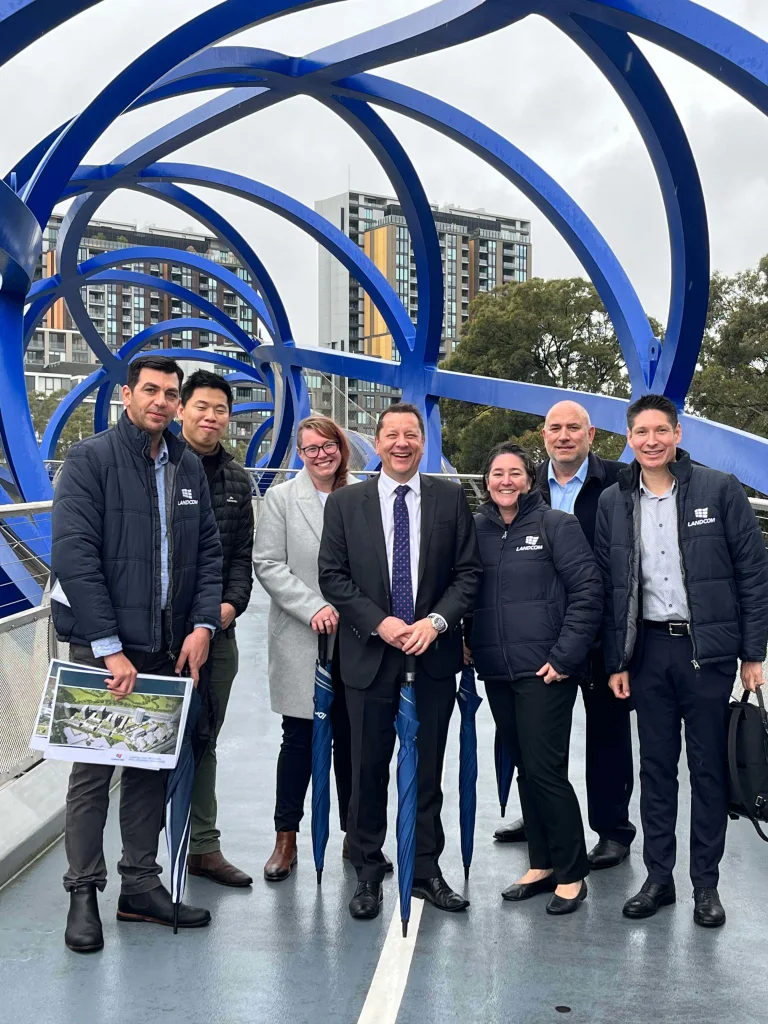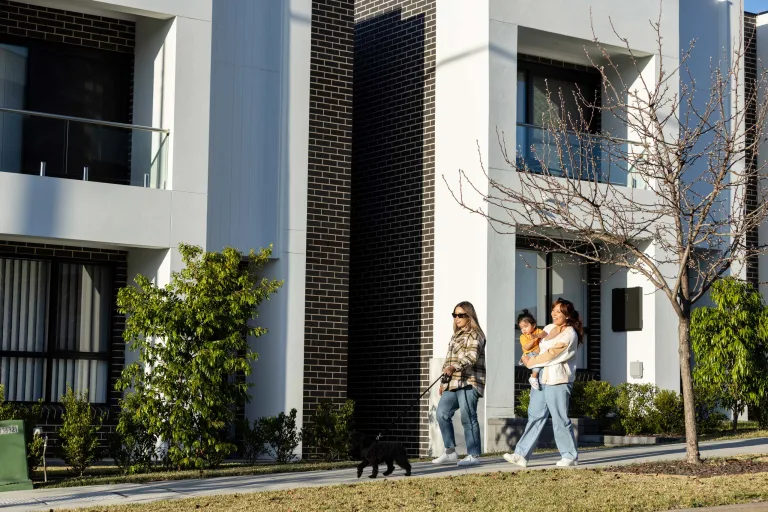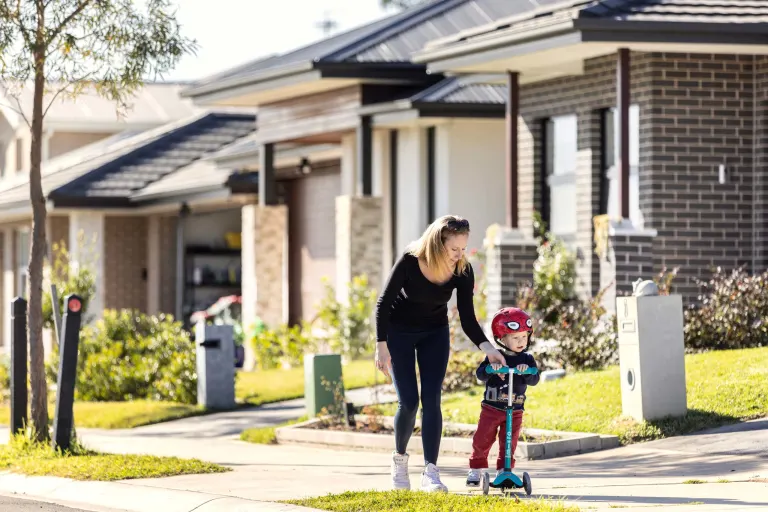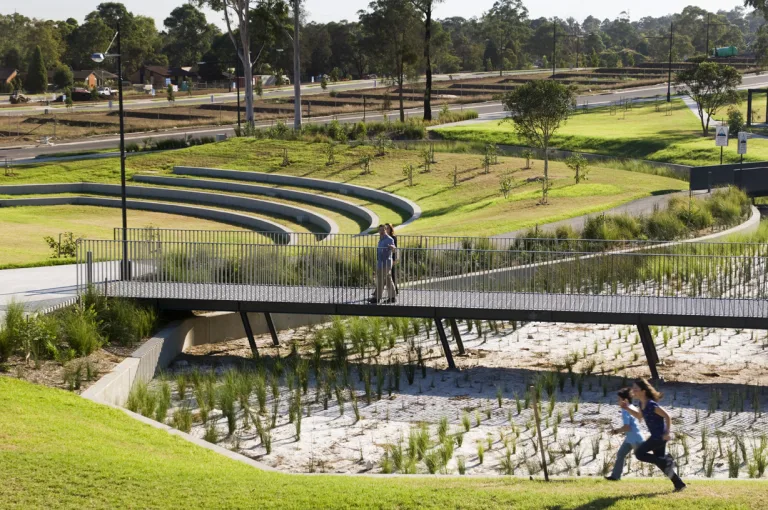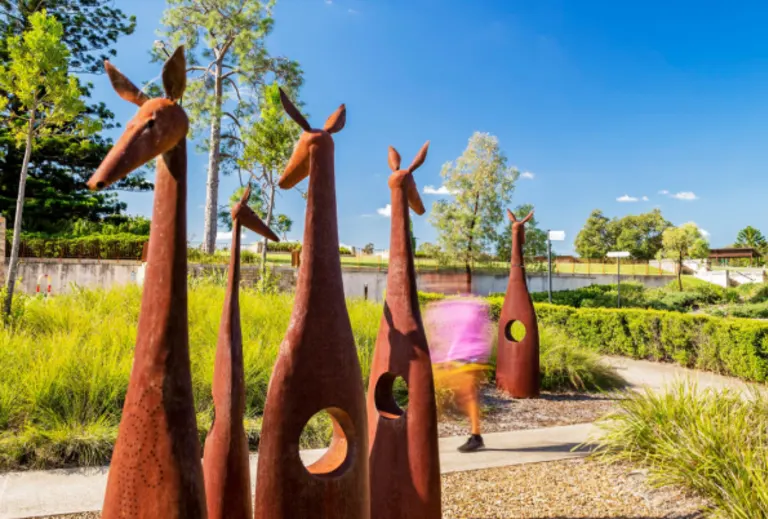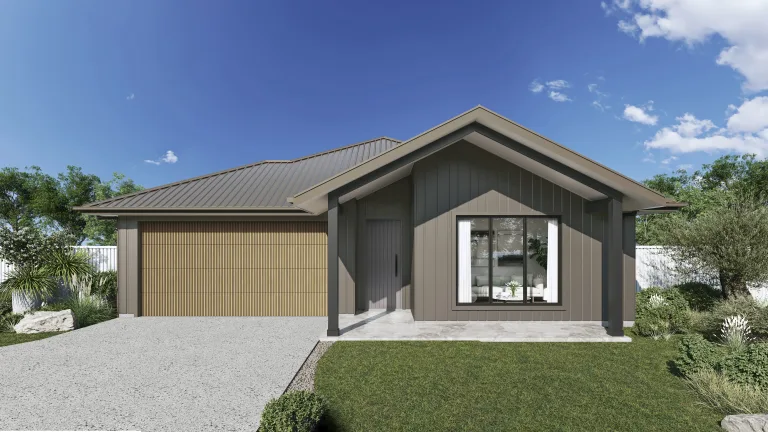
Welcome to East Lismore
Providing homes for long-term rent
Our development application (DA24/200) for 50 build-to-rent units was approved by the Northern Regional Planning Panel on 19 November 2024.
Our plans were informed by community and stakeholder feedback, planning controls and site investigations. Visit our Join In consultation page to read our engagement summary report.
We have selected FKG Group as our builder for the project. In September 2025 FKG will start preparing the site for construction, with works expected to finish in late 2026 for tenants to move in.
To keep informed as the project progresses, sign up for email updates.
The project
Landcom is proposing to deliver much needed long-term rental housing in East Lismore.
The $30 million project, funded by the NSW Government, will include around 50 build-to-rent apartments in mid-rise buildings that will demonstrate best practice design and sustainability.
Set to include a mix of apartment sizes to suit the needs, lifestyles and budgets of different households, future residents will be close to shops, schools, Southern Cross University, open space and other community infrastructure.
The project will provide greater housing security and choice to renters. Twenty percent of homes will be affordable rental housing for households with very low to moderate incomes.
The build-to-rent project site is adjacent to land owned by the NSW Reconstruction Authority that is planned to contribute more than 400 new homes in East Lismore.

Artist’s impression of proposed development, viewed from Military Road, subject to change and approvals
Location
Corner of 32 Crawford Rd / 144-146 Military Rd, East Lismore
Local council area
Lismore City Council
Proposed homes
50 build-to-rent apartments, including at least 20% affordable rental housing
Delivery timing
2023 to 2026 (pending approvals)
Timeline
FAQs
What are Landcom’s plans for the site?
The site we have secured in East Lismore is zoned for mixed-use, which permits residential development including mid-rise apartments.
We plan to deliver around 50 build-to-rent apartments, including 20% affordable rental housing, in mid-rise buildings.
The project will demonstrate best practice design and sustainability, and help to provide greater housing choice, affordability and security to address local need.
Subject to approvals, our builder FKG Group will start preparing the site for construction in September 2025, with keys in doors for tenants in 2026. The rental housing will be managed by a government agency or community housing provider.
To keep informed as the project progresses, sign up for email updates.
What is build-to-rent housing?
Build-to-rent housing is designed and built to provide long-term rental homes, rather than sold to homebuyers, providing an alternative to home ownership.
Build-to-rent offers longer leases, often up to five years, which give tenants security of tenure. This helps renters avoid the 12-month “leasing cycle”, which can leave them looking for a new home every year.
Annual rent increases are often locked in upfront, so tenants have financial security and know their rents will not escalate rapidly or unexpectedly.
Because of the longer-term tenancies, often many build-to-rent tenants are allowed to paint walls, hang pictures, keep pets and really set up home. They settle down, make new friends and build a sense of community.
At our East Lismore project, the units will be retained in government ownership and the details of how the housing will be managed will be made available closer to project completion.
What is affordable housing?
Safe, secure and affordable housing is essential to the wellbeing of individuals, the vibrancy of our communities and the productivity of the NSW economy.
At our East Lismore project, 20% of homes will be affordable rental housing for households on very low to moderate incomes. Rent is priced so tenants can afford other basic living costs such as food, clothing, transport, medical care and education. It is managed in accordance with the rent setting provisions of the NSW Housing Ministerial Guidelines.
Affordable rental housing is usually managed by community housing providers, which are not-for-profit, mission driven organisations who own, develop and maintain rental housing for people on very low, low and moderate incomes who require affordable homes.
Affordable housing is not the same as social housing, which is available to people on very low to low household incomes. This includes those who are struggling to afford rent and are often on the brink of homelessness. Landcom does not provide social housing.
Why does the Northern Rivers need apartments for long-term rental?
Housing affordability and availability is one of the biggest pressures facing NSW residents, with regional communities like Lismore and the wider Northern Rivers region doing it particularly tough.
The impact of major floods in February and March 2022 on the housing market in Lismore has added further pressure for hard-working people struggling to make ends meet because of rising rents, squeezed incomes and limited availability of homes.
This data provides a snapshot of pre-flood Lismore:
- Around 40% of local rental households are experiencing rental stress, paying more than 30% of household income on rent – this is much higher than the rest of NSW (10.8%).
- Sole person and couple households comprise around 50% of all households in Lismore, but studio and one bedroom homes only account for a small proportion of homes.
There is a mismatch between household type and dwelling size and a significant lack of housing choice for smaller households.
To fill gaps in the housing market there is a need for a better mix of housing with more smaller homes and housing suited to smaller households and mature aged people, given the population is also ageing.
Further, community consultation undertaken by Lismore City Council and Living Lab Northern Rivers has shown there is desire for greater diversity of housing and increased density.
Apartments, like those proposed at our East Lismore build-to-rent project, will help to fill the gap in the housing market and provide people with alternatives to larger, detached houses. Our project will also support construction jobs, boost the supply of local rental housing and help to provide greater housing choice, affordability, and security to address local need.
Sources: Australian Bureau of Statistics, Census Data, 2021 / Lismore Affordable and Diverse Housing Strategy, Lismore City Council, 2023 / Lismore Growth & Realignment Strategy 2022, Lismore City Council, 2022 / Look Ahead: Community Design for Lismore – Community Meetings Summary, Living Lab Northern Rivers, 2023
How can people apply for a rental?
The NSW Government will retain ownership of the build-to-rent properties, which will be managed by a government agency or community housing provider. Details will be made available closer to project completion.
Has planning considered the surrounding neighbourhood?
We want to demonstrate best practice design and sustainability.
As part of our project planning we worked with technical specialists to understand site opportunities and constraints to support well-designed development.
We also consulted Lismore City Council to minimise impacts on local roads, infrastructure, services and the surrounding neighbourhood, and invited community feedback on our plans.
To keep informed as the project progresses, sign up for email updates.
How will the new development impact local traffic and parking?
The development includes 51 secure off-street parking spaces for residents and visitors, which exceeds planning requirements. Residents can also walk, cycle or use an existing bus service to reach nearby destinations.
While modelling has shown that the development will not impact the local road network, we will deliver improvements to Military Road and Crawford Road along the entire corner site frontage. Road improvements include:
- widening Military Road to match the existing road width to the south
- constructing kerb and gutters, drainage and footpaths.
Detailed plans will be prepared for Council approval before works begin. During works, measures will be implemented to reduce the impact on local traffic and parking and to minimise impacts on nearby residents.
Will the trees on site be protected?
Yes, where possible.
We want to retain as many of the mature, native trees on site as possible, complemented by new tree plantings.
The trees help support habitat for wildlife, cool the streets and screen the new buildings.
What technical studies were completed to inform Landcom’s plans?
We worked with technical specialists to understand site opportunities and constraints to support well-designed development.
Technical studies cover:
- site access, traffic and parking management
- housing needs
- social infrastructure and needs
- Aboriginal cultural heritage and European heritage
- neighbourhood character
- urban design
- landscape design
- civil engineering
- environmental assessments to understand and manage potential impacts relating to ground conditions, stormwater, views and biodiversity.
What opportunities were there to get involved in planning?
We worked with technical specialists to understand site opportunities and constraints to support well-designed development.
We also consulted Lismore City Council to minimise impacts on local roads, infrastructure, services and the surrounding neighbourhood.
We met local community and stakeholder organisations after the site was secured in March 2024, held a community information session at the East Lismore Bowling Club on 1 August 2024, and an online feedback form was open for three weeks between 17 July and 7 August 2024. We heard a mix of views that helped to inform our plans. To learn more, read the engagement summary report.
The community was also able to submit feedback for Council's consideration when our development application was publicly exhibited by Council from 11 to 26 September 2024.
When will construction begin and what is involved?
Subject to approvals, our builder FKG Group will start preparing the site for construction in September 2025, with keys in doors for tenants in 2026.
Construction includes:
- ground and foundation works
- external road upgrade works
- concrete and structural works
- installing roofing
- internal fit-out works
- installing services
- landscaping works
We will work with contractors to minimise potential construction impacts and keep neighbours informed with timely updates.
How will construction impacts be managed?
Measures to minimise construction impacts on neighbours include:
- spraying water to reduce dust and stopping works during high winds
- noise and vibration monitoring
- establishing tree protection zones
- installing fencing with mesh barriers to reduce the spread of dust and stop local wildlife from accessing work areas
- installing controls to prevent stormwater runoff from site
- ensuring construction vehicles park on site, not park on local streets
- traffic control to guide construction vehicles when entering and exiting the site, and keep pedestrians, cyclists and other road users safe
- directing vehicles to enter and exit the site in a forward direction to prevent blocking traffic
- instructing truck drivers to not idle on local roads
- distributing truck movements during the day to avoid peak hour traffic
- installing signage to safely guide road users, pedestrians and cyclists
- sharing construction updates with immediate neighbours
- maintaining consistent hours of work. Pending approval, we propose to work:
- Monday to Friday, 7am - 5pm
- Saturday hours as approved by Council.
We will notify neighbours if we need to work extra hours (with Council approval).
A site manager will be on duty during construction hours and their contact details will be on site signage.
If you require the services of an interpreter, please contact the Translating and Interpreting Service on 131 450 and ask them to call Landcom on 02 9841 8600. The interpreter will then assist you with the translation.
About Landcom
We develop land and property, increasing the supply of housing for the people of NSW.
As a state-owned corporation, we are a commercial business that achieves public outcomes while also generating financial returns for the NSW Government. We enable development by de-risking and unlocking strategic and complex sites in collaboration with landowners and the market.

